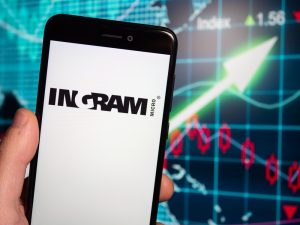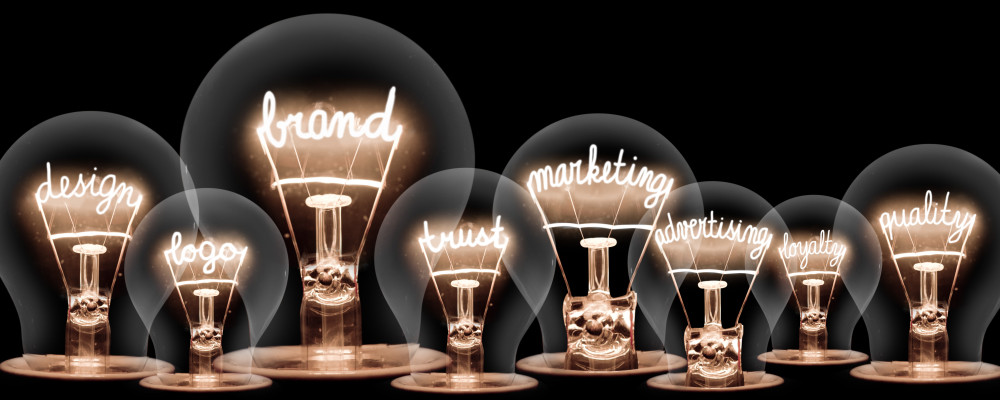
Birthing a Brand
While e-commerce and the day-to-day running of a business are where my passion has always been, the last few years have seen me sojourn into the world of leading a global marketing team. And it has taught me so much. Most importantly, I learned—beyond buzzwords—what it means to truly define a brand.
In late 2016 and early 2017, a new services division formed within Ingram Micro. Now, Ingram Micro is well known for being the world’s largest distributor of consumer electronics & technology products. It makes up the lion’s share of the overall business, and we’re well known and respected for that capability.

When people hear “Ingram Micro,” most of them think “distributor.” We also have Ingram Micro Cloud, which is a rapidly growing business, and a very closely related offshoot of traditional distribution that helps support products that are now bought and sold digitally, like cloud-based subscription services such as Dropbox or Microsoft Office365. That evolution was a natural extension of the well known Ingram Micro brand.
Our division—the “Services” division—however, faced an interesting challenge. Ingram Micro had acquired a number of separate companies that formed the backbone of this division, many of which were service providers (reverse logistics, forward logistics, third-party logistics and shipping, device repair and refurb, wholesale product clearing). We worked with many of the same companies as Ingram Micro, but often with different stakeholders or departments..
Our business engaged in three-month to three-year sales cycles with customers, vs. a more transactional relationship that can vary quarter to quarter. Our success was based on how we performed, our service, our attitude, and of course, the personal relationship side of things, rather than annual product sales revenue.
Every time we would go to a show and introduce ourselves as Ingram Micro, people would say, “Oh, the distribution company.” But we weren’t selling distribution, so this created a long talk track where we had to say, “Oh no, we’re the services division built on top of that big distribution company.”
The real issue was that we didn’t have a concise elevator pitch or brand recognition. So we had to find a way to still embrace the strength of a 40 year old global brand, while speaking to a new set of customers..
Come Together

For the acquired brands under this new umbrella, the common denominator was that we were all service providers who acted more like an outsourced extension of our customer’s business than a sales channel. Our goal was to figure out how to communicate that effectively while still paying homage to—and being a part of—the Ingram Micro brand that is so well known and recognizable.
We went through a lot of discussions as a leadership team (composed of the founders and former executives from each company) trying to find a way to create buy-in and cohesion among the group. We felt a bit like a band of outlaws; all doing our own thing but needing to find a way to pull it all together so that it made sense.
We unified under the services concept, as it was the strength we shared. We went back and forth and came up with a concept that we all liked.
Eventually, we settled on a name that worked within corporate guidelines and also aligned around our purpose, and Ingram Micro Commerce & Lifecycle Services was born.
To roll this out, the guidelines we had to work within were specific, so we started to look at other companies that were structured similarly. We pinpointed General Electric, since they have a large corporate entity that is widely known for a few key services, but they also have numerous distinct divisions under the brand name.
Once we had our heads wrapped around the structure, we shifted our focus to tackle branding. We spent so much time staring at logos, mockups, treatments, and color schemes. Should the logo be white on black? Or maybe white on blue? We stared at logos for a solid week, until we reached the point of total burnout. We were spinning our tires.
Thankfully, we had the chance to speak with Seth Godin, author of Purple Cow and one of the most talented and knowledgeable branding professionals in the industry. We went through the story of the name and our ideas about the logo, and he stopped us just a few minutes into our spiel.

Seth said, “You know a brand is so much more than a logo, right? It’s how you interact and how your people behave. It’s the cultural things that you promote and how you give back to the community.” This one simple comment really got us thinking.
He also reminded us that our brand would not ultimately be what it was when we launched it, but rather what we made of it in the 24 months that came after. It would all come down to how we interacted with customers and how people received and perceived us.
How would we respond to difficulties? Would our people enjoy their jobs? What’s the buy-in? With that, we decided to focus more on those “soft” elements of the brand.
United but Unique
We took the name we’d been given and figured out how to roll it out as a unified brand while allowing each company under the umbrella to live within it in a way that made sense for them. We gave everyone a structure—logos to use, templates to print things on, PowerPoints and Word documents, a fresh website—and behind the scenes, we looked at things in pockets. There were still unique identities within the group, identities which came from the people on the front lines.

We laid it out like this: There’s the “house” we all live in called Ingram Micro Commerce & Lifecycle Services. We speak with a unified voice and present a united front. But when you go the next level down and think of the parts of the house that deal with the customer, that’s where we wanted to empower the leaders of the companies to make the brand their own.
Brightpoint was one of the companies we had acquired, and they took the lead of our “Mobility” division. The leader of that team introduced the concept of The Three C’s: Customers, Community, and Culture. This strategy resonated with that team. They started investing in living these concepts, from holding small activities like bake sales in their office to fundraise for causes they were passionate about all the way up to much larger initiatives like flying down to Puerto Rico to give toys to kids at Christmas. This drive towards community service impacted the whole corporation in a positive manner, all the way to the top.
Additionally, we acquired a leading ITAD (IT Asset Disposition Service) company who also had a well established brand/culture, and they took point on Ingram Micro ITAD. With big data breaches happening so often these days, there is a deep need for data security for corporations, and these guys went on a tear.
They were showing great stuff in the industry. To fire up the team, they coined the rallying cry #unstoppable, handing out awards to team members and holding internal competitions. It’s a different culture from what Mobility went with, but it’s what worked for them, and it spoke to their customers.
As we witnessed these groups so boldly living their brands, we came to the realization that this was the unifying element that CLS needed to move the larger brand well beyond a logo
Over the next few months, our division, Ingram Micro Commerce & Lifecycle Service, will be holding a ton of pop-up shops at our central offices around the globe. We’ll have food, swag, and prizes, and it’s going to be a lot of fun, but most importantly, it’s a chance for leadership to embody the spirit of the brand we are building.
We could’ve just sent a box of “stuff” to each location, but we want this to be truly memorable for our people. We want division leaders hosting these events and directly interacting with the people who work hard every day to make “CLS” a success.
These habits have forged a unifying bond among everyone in this division. We went from trying to put so much thought and effort into the brand name and logo to letting all of that go and focusing on the people—those we work with, and those we work for.

Brand isn’t a logo; brand is what you do, and how you do it. It’s why you do it. The logo almost doesn’t matter. All the things you may not necessarily think of as “branding” are actually what create your brand identity and the trust that comes with it.
This article first appeared on linkedin.com on April 11, 2019





